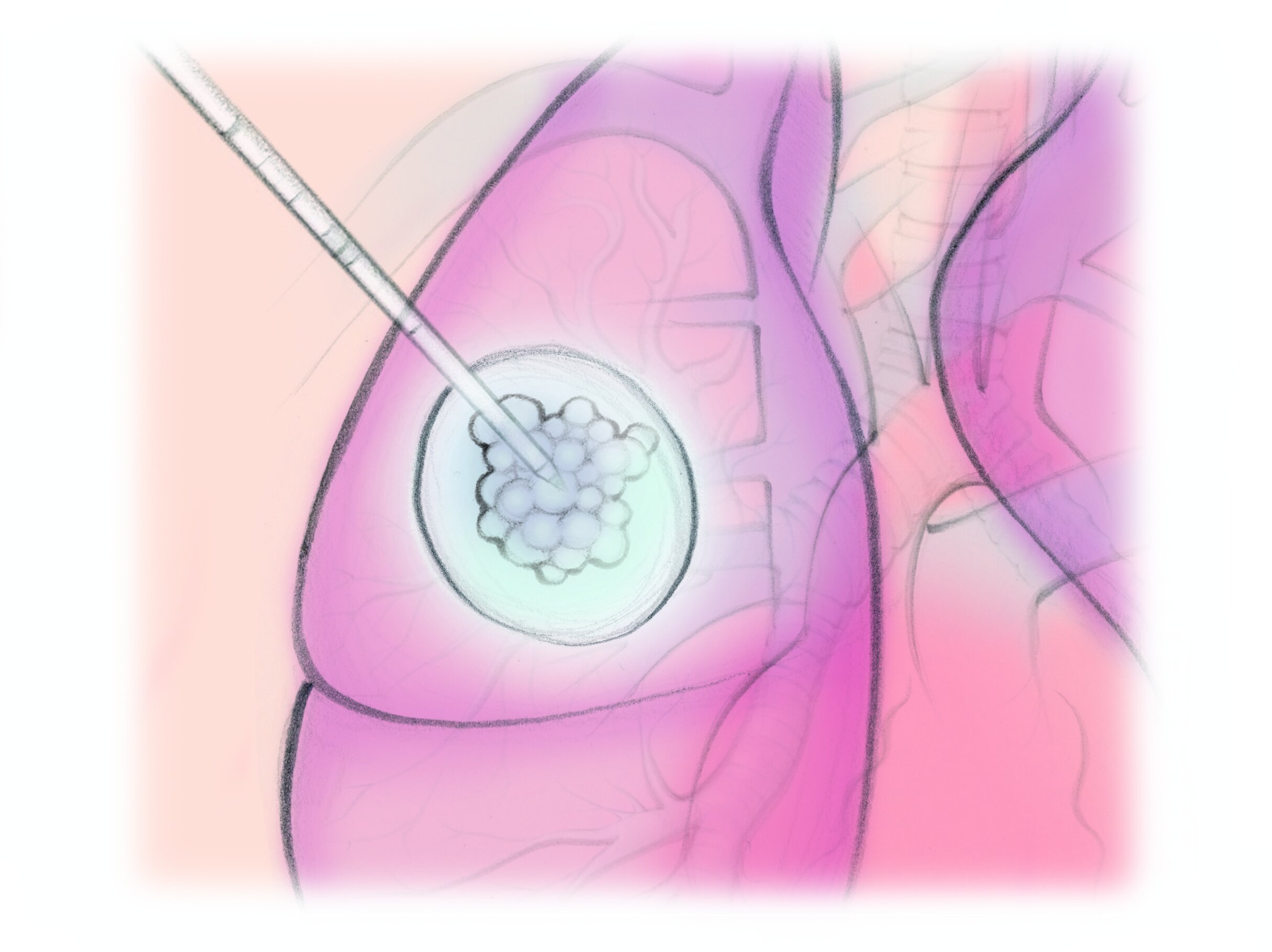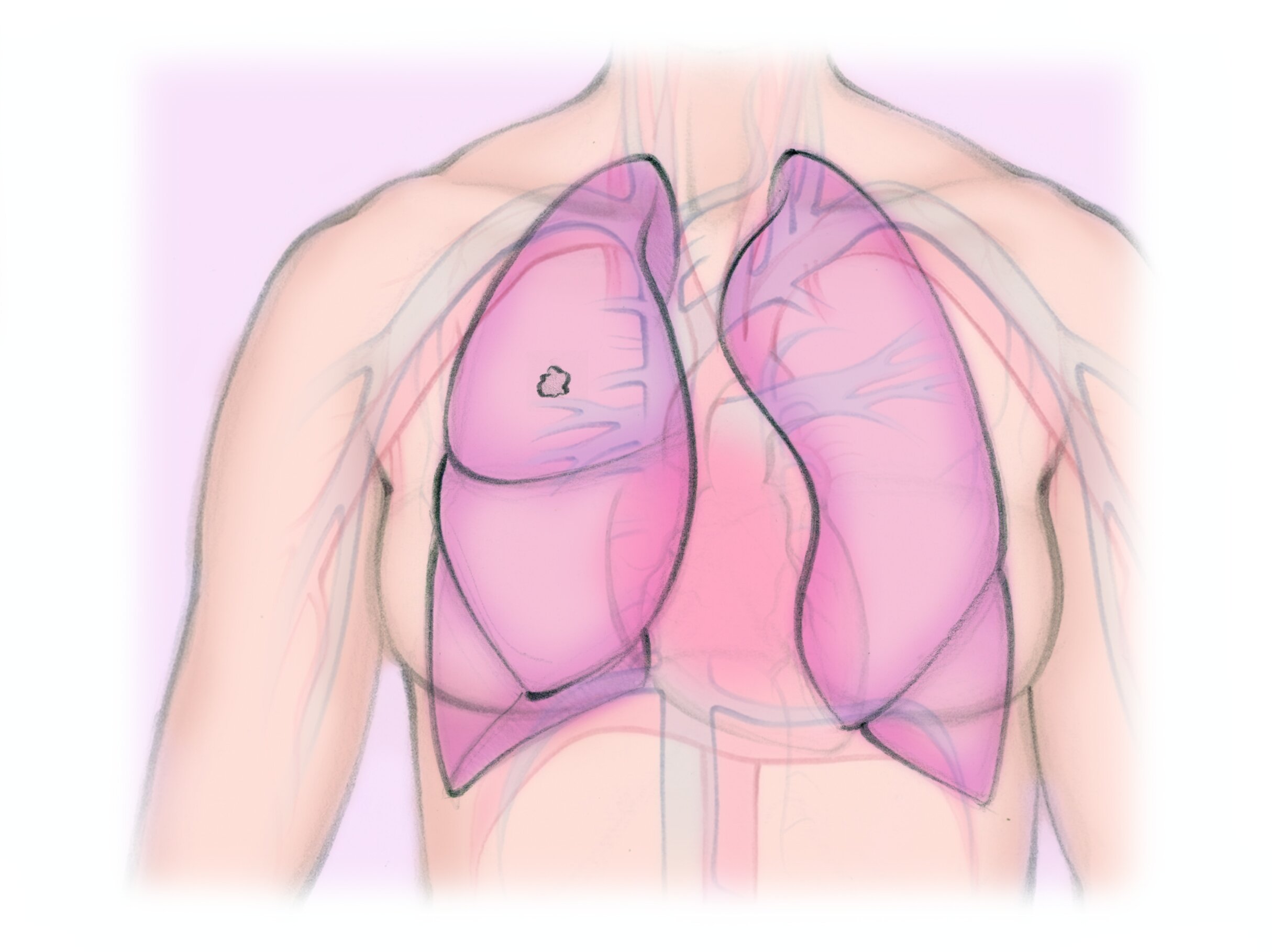What is lung tumor ablation?
Lung tumor ablation is a minimally invasive treatment for lung cancer. It can be an alternative to surgery for patients with a few, small tumors in certain locations.
Ablation uses heat or ice to destroy tumors. Heating the tumor is done with “microwave ablation” or “radiofrequency ablation.” Freezing the tumor is called “cryoablation.” The dead tumor turns into a scar over time.
How is lung tumor ablation done?
Lung tumor ablation is done with a skinny wand and medical imaging (CT and sometimes ultrasound). Medicine is given to make you drowsy or to put you to sleep. The clinician puts the wand into the tumor through a pinhole in the skin. The tip of the wand then heats or freezes the tumor. The clinician then removes the wand and puts a small bandage over the pinhole.
Lung Tumor Ablation
1. The clinician places the ablation wand in the lung tumor through a pinhole in the skin.
2. In cryoblation, an ice ball forms around the wand to destroy the tumor.
3. After removing the wand, the clinician puts a bandage over the pinhole. The tumor turns into a scar over time.
What are the risks?
Lung tumor ablation is generally a safe procedure when done by a specialist.
Lung tumor ablation is generally a safe procedure when done by a specialist. 1 in 10-20 people will have temporary pain, fever, or minor bleeding. Coughing up blood after lung ablation is common and usually minor.
Lung tumor ablation can cause the lung to collapse or deflate in around 1 in 4 or 5 people. Usually this heals on its own. Sometimes the clinician needs to insert a tiny tube to inflate the lung. Rarely the clinician must leave a tube overnight to help the lung inflate and heal.
Major complications of ablation are rare. They occur in 2-3 in 100 people and include internal bleeding, infection, skin burns, and damage to surrounding areas. Death is extremely rare, occurring in up to 1 in 1000 people.
What are the alternatives?
Your treatment options depend on your preferences and unique conditions. These include your overall health as well as the size, location and number of tumors that you have. Sometimes you may benefit from a combination of these treatments.
Alternative 1 No treatment. The disadvantage of this is that the cancer may continue to grow.
Alternative 2 Surgery to cut the tumor or part of the lung out.
Alternative 3 Radiation therapy is a series of treatments to destroy the tumor with radiation beams from the outside.
Alternative 4 Medicines to treat the cancer or help the immune system fight the cancer.




